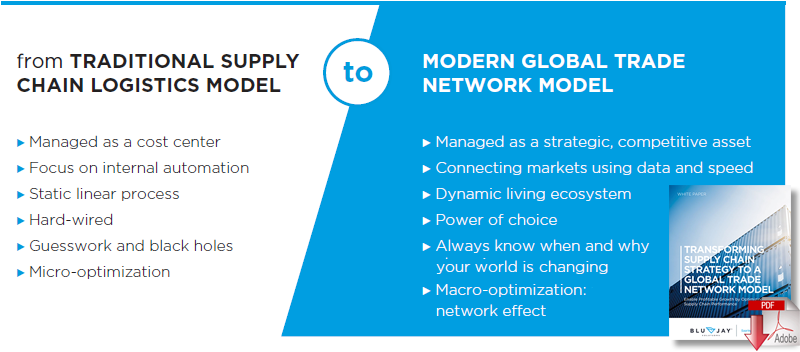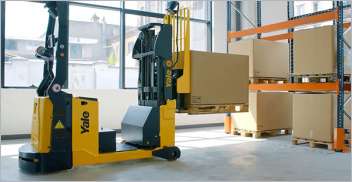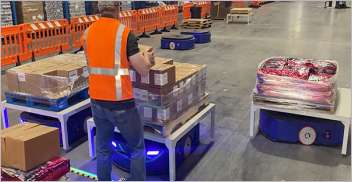We all know change is difficult, and the longer you follow a certain path, the harder it becomes to change course.
Following the traditional supply chain model feels safe and comfortable - like your favorite pair of sneakers.
But over time, those sneakers wear down and stop supporting your feet as they once did.
The Amazon effect is wreaking havoc on supply chains globally.
Consumers are buying online from everywhere in the world and expecting delivery in one to two days.
International shipping presents real challenges for suppliers and shippers attempting to keep up with the velocity expectations of these consumers.
Companies are realizing they must follow a new path - one that leads to a global trade network.
Traditional Supply Chain Logistics Model vs. Global Trade Network Model

When comparing a traditional supply chain model with a modern global trade network model, there are some key differences that become immediately obvious:
Cost Center vs. Strategic Asset
In the traditional supply chain model, the supply chain is viewed as a cost center. A Global Trade Network is viewed as a strategic, competitive asset.
Gone are the days of only planning and executing the shipment booking through the delivery process. Now the attention is directed to streamlining the entire order life cycle ranging from purchasing order management to import/export compliance in order to deliver the best customer experience.
Connecting Partners and Real-time Data
In the old model, stand-alone supply chains were focused on internal automation for cost-cutting and time-saving measures.
The problem is stand-alone supply chains still rely on partners that reside outside their system. When things change with their partners not only are those changes impossible to see but the effects of the change create chaos. This chaos increases the cost to serve customers and forces partners to add inventory buffers into their supply chains.
The competitive advantage achieved through a global trade network is connecting partners using real-time data and speed to ensure everyone is on the same page.
The interconnectivity removes barriers created from static linear processes and allows a supply chain to function as a dynamic living ecosystem where each action gets an immediate reaction to streamline processes. The cost to serve goes lower while customer service improves.
Actionable Intelligence
Another advantage to the global trade network model is the amount of actionable intelligence the network can provide to help make better business decisions.
It eliminates black holes and guesswork by providing real-time data on what is happening in the supply chain.
The analytics can be used to enhance optimization opportunities so companies can look beyond micro-optimization and expand to macro-optimization within the network.
We’ll take a deeper look at the opportunities available through macro-optimization in the article “Are You Macro-Optimizing Your Supply Chain?”
To learn more about the benefits of a Global Trade Network, download the white paper “Transforming Supply Chain Strategy to a Global Trade Network Model.”
Related Article: Are You Macro-Optimizing Your Supply Chain?
Related White Papers
Transforming Supply Chain Strategy to a Global Trade Network Model
The technology to support a global trade network is available today, it’s just a matter of looking at supply chain design in a new way, implementing it, and moving global trade to the forefront where your supply chain becomes today’s battleground. Download Now!
Carrier Connectivity: The Critical Component of Transportation Management
In this white paper, we explore the value of building a transport management system on carrier connectivity, explain the difference between doing this yourself versus working with a vendor that has baked this connectivity into its solution. Download Now!
Article topics
Email Sign Up




















